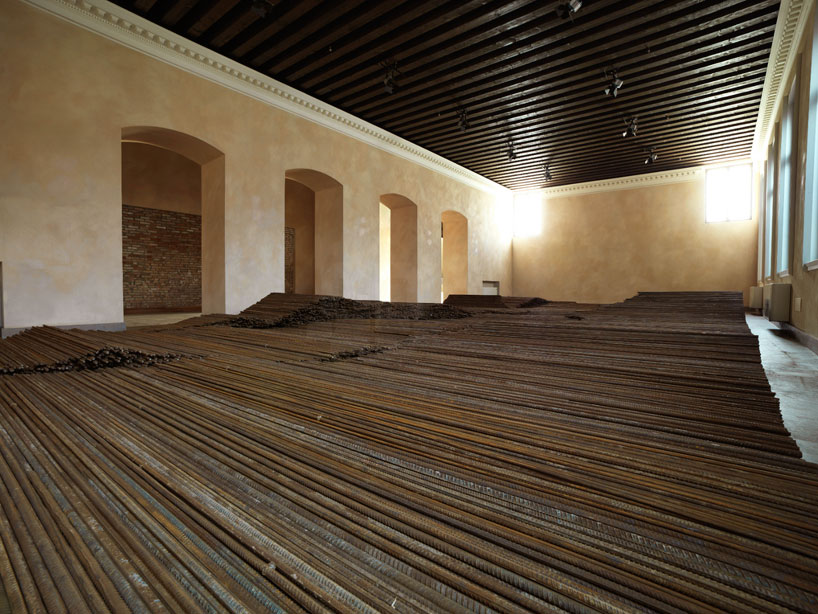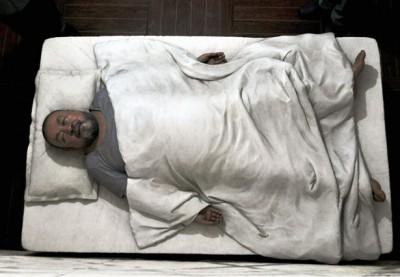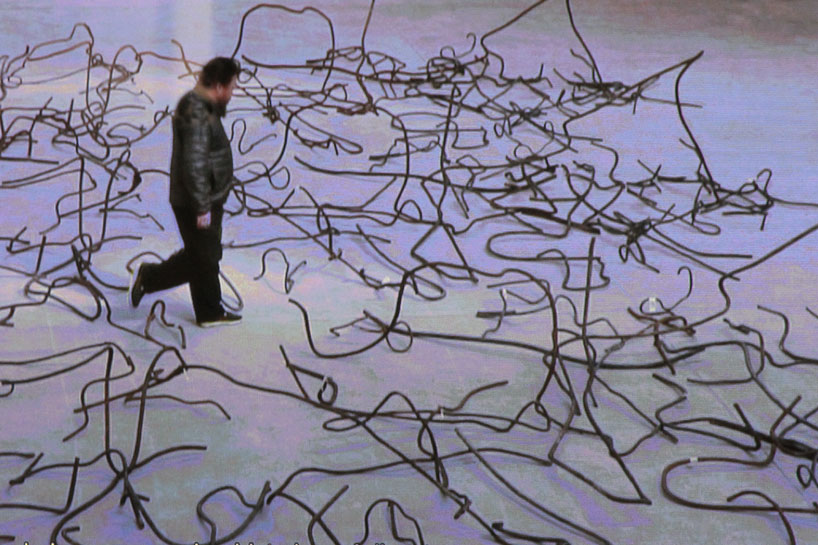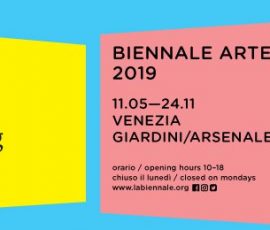Via the Associated Press
The art world’s famous Venice Biennale, which opened June 1 and runs thru November 24, features Chinese artist Ai Weiwei whose two powerful solo exhibitions are fiercely political. Roberta Smith of The New York Times called him an “eloquent and seemingly unsilenceable voice for freedom.” Chinese authorities, who had imprisoned him for eighty-one days in 2011, refused to allow him to leave the country to go to Venice to install his work. For the opening, he sent his mother instead.

Chinese artist Ai Weiwei's mother Gao Ying looks into one of the six containers part of an installation by her son during a press preview of the 55th Venice Biennale Photo: AP Domenico Stinellis
The Associated Press reports, “Weiwei’s mother viewed for the first time a series of dioramas depicting six episodes of intense pressure during her son’s 81 days in detention in 2011. She walked quietly through the exhibit, peering through openings in the 4 1/2-foot high boxes inside which Weiwei reconstructed in great detail scenes of his captivity. His mother did not speak to journalists who documented the moment, but she was moved to tears as she left the exhibit in the church of Sant’Antonin.”
The title of the piece, S.A.C.R.E.D., is an acronym referring to the six moments portrayed in the dioramas: Supper, Accusers, Cleansing, Ritual, Entropy, Doubt. The Guardian says, “The strange intensity of the scenes was explained by Greg Hilty of London’s Lisson Gallery – He told The Guardian that for those eighty-one days, Ai had nothing to do but “memorise the minutest details of the tiny, featureless room in which he was kept.”

The six dioramas of Ai Weiwei's 2011 detention drew tears from his elderly mother, who viewed them for the first time Tuesday in Venice. (Domenico Stinellis/Associated Press)
The second Weiwei piece at the Biennale is the artist’s response to the 2008 Sichuan earthquake, when more than 5,000 children were killed in schools deep in rural China – schools that collapsed because of shoddy construction permitted by corrupt officials. After the government refused to release the names of the victims, Ai Weiwei formed a citizens’ commission, volunteers, including parents, who investigated the disaster and published their findings, including the names of victims and details about the corruption.

ai weiwei straight, 2008-2012 steel reinforcing bars, 6 x 12m installation view,zuecca project space,venice, 2013 courtesy, the artist and lisson gallery
Meanwhile, the government removed the faulty steel rebar from ruins of the collapsed schools and sold it for recycling. Ai Weiwei bought it — 150 tons of twisted evidence of the corruption and the cover-up. He then organized a shop where the steel bars were straightened.

STRAIGHT The Chinese artist and dissident Ai Weiwei has premiered three works at the 2013 Venice Biennale. www.fastcodesign.com
These were the events that made Ai Weiwei the world’s most important political artist, and it was at this point that Ai Weiwei was imprisoned. But when he was finally released eighty-one days later, he found that the work of straightening the rebar had continued.
The piece on exhibit in Venice displays 150 tons of rebar recovered from the ruined schools—different lengths and diameters, now rusted and pounded and piled on the floor. Ai Weiwei’s fifteen-minute video tells the story from the beginning—how he went to Sichuan and videotaped the graves of dead children, the demolition of the schools, the sorting of the rebar, and then he shows a dozen workers pounding and straightening the steel.

The collection of metal rebar was salvaged from the sites of schools that collapsed in the 2008 Sichuan earthquake. Photo: artsobserver.com
To learn more about Ai Weiwei, watch Alison Klayman’s terrific documentary “Ai Weiwei: Never Sorry”, and visit Wei’s website, aiweiwei.com.
Related articles











Comments (0)